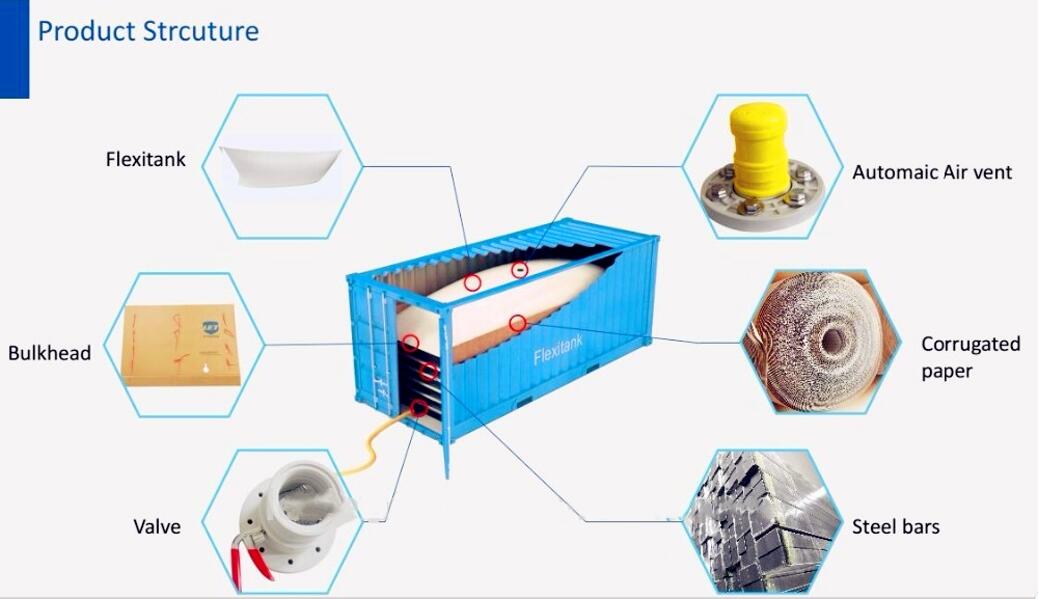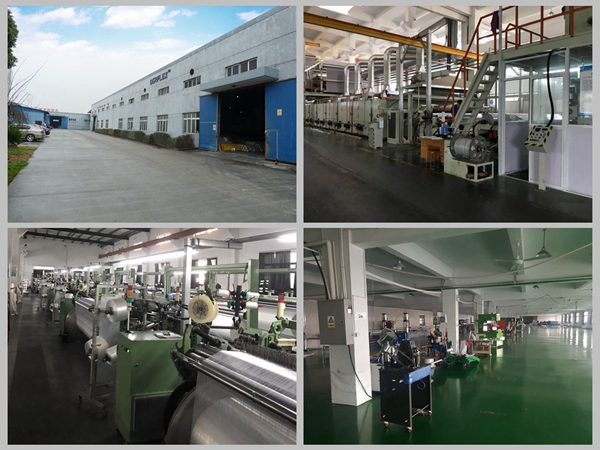What's the flexitank container bag made of
What's the flexitank container bag made of ?
Ⅰ,What is the flexitank container bag?
The earliest concept of flexitanks was developed during World War II to transport diesel and fuel by Marston Excelsior — as “non-metallic fuel tanks with self-sealing covers through collaboration with ICI fabric sandwiched between layers of rubber-like material”.
Following this, in the early 1960s, the US military used flexitanks to store and transport water and diesel fuel. Later, in the 1970s, shippers in the United Kingdom needed to move liquids overseas.
But ISO tanks were an expensive option (costing about $5000 each). So, they decided to transport liquids in comparatively cheaper, heavy-duty rubberized bladders.
In the 1990s, these rubber tanks were replaced with more durable and cheaper material, thermoplastic (PVC), retailing at $1850 apiece.
These formed the primary prototype for present-day flexitanks, and quickly became a preferable choice for chemical shipments.

Ⅱ、What's the flexitank container bag made of?
In the early 2000s, newer, cheaper, and recently known versions of flexitanks entered the market. Made from multiple layers of thin polyethylene.
A Flexitank container is a bulk liquid storage tank. Made of numerous layers of polyethylene and a woven polypropylene outer covering.
They are manufactured using different types of materials such as:
-Multilayer polyethylene
-Single and double layer polyethylene
-Barrier tanks
-PVC
-Bottom discharge

Ⅲ, Uses For A Flexitank container bag
Due to its high efficiency and exceptional contamination prevention, flexitanks are used for non-hazardous chemical transportation. But also for food-grade goods like edible oil, fruit concentrates, drinks, among others.
Fuel storage
Liquid fuels including gasoline, diesel, and oil can be stored and transported in Flexitanks easily. They are primarily utilized for storage. Coupled with a protective lining and a berm, to provide extra containment safety to the surrounding environment.
Potable Water Storage
Flexitanks occupy very little space and are easy to transport. In case of emergencies or during disaster reliefs, they are also used to store and transport potable water.
Food-Grade Liquid Storage
Flexitanks container bag enable the safe storage of food-grade liquid ingredients, such as milk, juices, wines, fructose syrup, and others.
Industrial Chemical Storage
Flexitank containers are ideal for transporting and storing industrial liquid chemicals. Such as liquid detergents, lubricants, fertilizers, liquid latex, and paints, among others.
Single-Use & Primary Storage
Flexitanks can decrease the overall storage costs in cases where liquid storage is not for a long duration

Ⅳ, Uses for a flexitank container bag
1) Fuel storage, 2)
Potable Water Storage 3) Food-Grade Liquid Storage 4) Industrial Chemical Storage 5) Single-Use & Primary Storage
Ⅴ, Advantages To Using A Flexitank container bag
Effectively, flexitank storage tanks have made transportation more efficient, cost-effective, and also have a lesser environmental impact. Flexitank containers have an increasingly growing demand as they are economically viable for bulk traders for transporting non-hazardous liquid cargo.
They also offer better protection against liquid cargo contamination.And compare to tank containers, you would not need to clean Flexitank after it’s unloaded because the bags are disposable.
1) Cost-Effective Option
Flexitanks are less expensive than drums, IBCs, and ISO tank containers. The cost of using flexitanks is 33% less than what is needed to spend when transporting bulk liquid using traditional bulk liquid containers.
2) More Capacity
Flexitank container bag can carry 15% more payload than what is carried by IBCs. 44% more than drums. And 50% more than bottles.
3)Preserves Product Quality
Flexitanks keep the quality of liquid carefully intact. They are composed of several layers of polyethylene, each fitted with a pump and a valve. Making it airproof, waterproof, and weatherproof. They are mostly designed for single-use which contributes to reducing the risk of contamination considerably.
4) Faster Loading & Unloading
Flexitank storage containers do not require a forklift to load or unload. This makes the entire loading and unloading process faster by up to 90%.
5) Requires Less(er) Labor
As flexitanks are convenient to handle, load, and unload, the involvement of the labor is comparatively lesser. This makes the logistics revenue considerably lower.

Ⅳ、Recommended Flexitank Capacity by Liquid Type
The most widely available flexitank containers come between 10,000 liters and 24,000 liters. Flexitank models are available in 16,000L, 18,000L, 20,000L, 22,000L, and 24,000L.
| Type of Product to be Transported | Density
(kg/m3) |
Recommended Size of Flexitank |
| Latex | 60 – 95 | 19,000 L |
| Polyol | 1,100 | 19,000 L |
| Glycerin | 1,260 | 20,000 L |
| Palm Oil | 887.5 | 21,000 L |
| Olive Oil | 905 | 22,000 L |
| Wine | 985.7 | 24,000 L |
Ⅶ,As a rule, our Flexitank tarpaulin material is made of hot-melt PVC coated polyester fabric, which is with characters of waterproofing, good flexibility, good tearing and pealing strength.
Main products:
|
Part No. |
Specifications |
|
DG1122 |
1000D*1000D, 20*20, 650gsm |
|
DG1330 |
1000D*1000D, 30*30, 900gsm |
DERFLEX is professional manufacturer of industrial fabrics and films,


If you have more interest, please contact our sales team for more information.
Email : masha@derflex.com whatsapp: +86 131 6285 8753